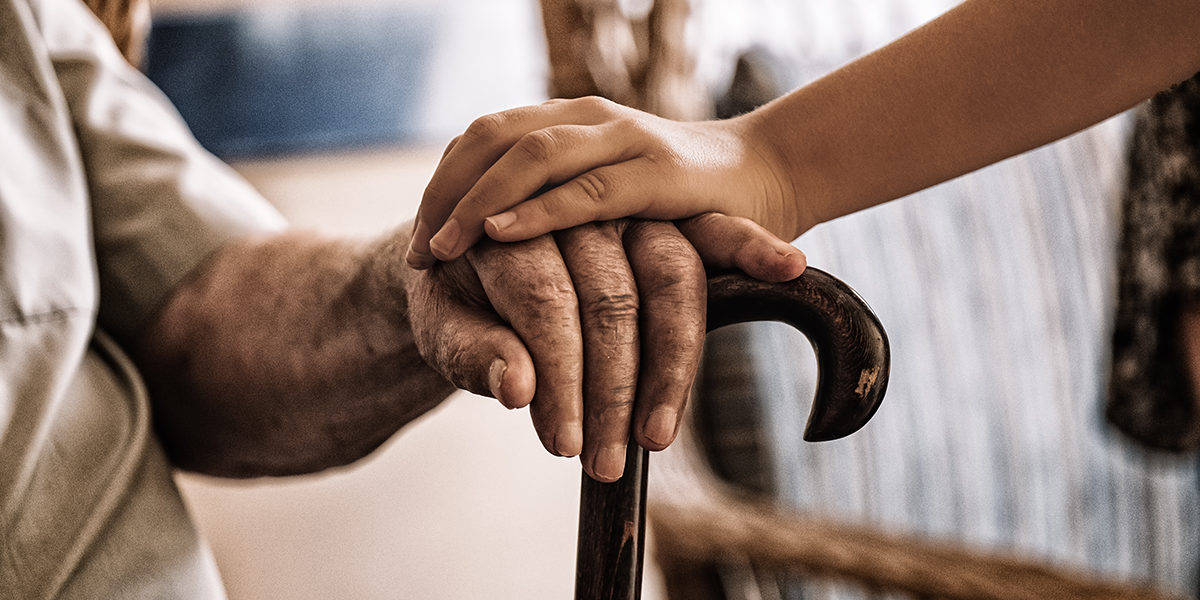Osteoporosis, as osteoporosis is also called, is associated with old age and is often thought to be a typical female ailment. These are fables. Osteoporosis can occur at both younger and older ages, and in both men and women. Of the approximately 1 million people with osteoporosis, about 30% are men. So while it is more common in women, from research by the RIVM, men are catching up. But what is osteoporosis and what causes this condition? And how do you know if you have osteoporosis, what can you recognise it by? And more importantly, what can you do about it?
What is osteoporosis?
Osteoporosis literally means porous bone. We also refer to it as osteoporosis. In this chronic condition, bone density decreases and your bones become weaker. The structure of your bone also changes. This combination of weaker bones and altered bone structure causes bone fractures to occur more quickly. Bone fractures are therefore usually the first signal to have your bone structure examined.
What is the cause of osteoporosis?
We distinguish between primary and secondary osteoporosis. In primary osteoporosis, there is no identifiable cause. In secondary osteoporosis, the cause lies in a particular disease, for example. Or it is due to the use of certain medicines, such as corticosteroids and certain anti-epileptics (drugs against epilepsy).
Women are more likely to develop osteoporosis. This is due to the menopause. During menopause, the decrease in bone strength under the influence of hormonal changes suddenly goes much faster than in men. There are also a number of known factors that increase the risk of osteoporosis.
- Not enough exercise. Exercise stimulates the production of bone tissue.
- Body weight or BMI too low
- Calcium deficiency. Calcium is a main component of bones. Dairy products contain a lot of calcium.
- Vitamin D deficiency. Vitamin D is needed to absorb calcium from your blood and build it into your bones. Daylight causes your body to produce vitamin D.
- Smoking and drinking excessive alcohol.
- Certain drugs. Corticosteroids (these are strong anti-inflammatory drugs, such as prednisone) and thyroid hormone are known to disrupt the balance between bone production and bone breakdown.
- Certain conditions. Several gastrointestinal and thyroid disorders are known to increase the risk of osteoporosis. Also, if you had an eating disorder when you were younger, you may develop osteoporosis later in life because malnutrition meant your bones were not built up for a while.
What are the symptoms of osteoporosis?
A bone fracture is usually the first sign. It may also be a vertebral collapse. This is often accompanied by back pain, but that pain can go away again. If the pain is gone, but you have become shorter, it is important to get checked for osteoporosis. Bones can sometimes even break spontaneously. Some patients get a broken rib just by coughing. Even a slight fall can lead to a hip or wrist fracture. Another indication of osteoporosis is a hunchback. If there is constant pain in the back and low back afterwards, this can also be a sign of osteoporosis.
How to prevent osteoporosis
The good news is that there are preventive measures to prevent osteoporosis later in life. These include adequate calcium intake, 1,000 milligrams a day. Calcium is found in dairy products and fish, among others. Our body also needs vitamin D to get the calcium into the bones. The body makes this vitamin itself when sunlight hits the skin. We can also take vitamin D as tablets. And exercise is important. Moderate muscle exercise is very good for our skeleton.
What should you watch out for if you have osteoporosis?
Bone fractures are usually the result of a fall. So it is important to minimise the chances of falling. We offer a few tips:
- Improve your stability. The physiotherapist or remedial therapist can help you do this
- Make your home safer. Ban loose rugs from your living room and bedroom and ensure good lighting. Clear away all things you might trip over.
- Take care with medication. Do not use medicines that sedate you.
- Use walking aids, such as a cane or walker, if necessary
- Make sure you have good shoes
- Watch your posture; poor posture increases the risk of falls
- Pay attention to alcohol consumption; just one or two glasses can reduce your stability and balance.
What can physiotherapy do?
The physiotherapist can give you comprehensive information and advice on lifestyle, safe exercise, risks in the home situation and learning to manage pain. You will work with the physiotherapist to see how you can reduce your symptoms associated with osteoporosis. You can work under supervision to increase your stability. You can also work on your bone density and strengthen your muscle strength through exercise programmes.
Do you suffer from osteoporosis and want to work on fall prevention and/or your stability. Then our physiotherapists at FriskFysio can help you. Please contact us via the website, 085-5000333 or info@friskfysio.nl.







